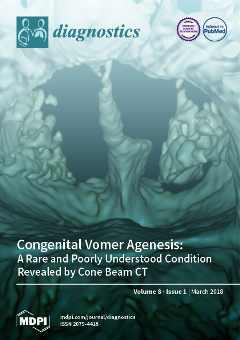Controversies in the treatment of venous thoracic outlet syndrome (VTOS) have been discussed for decades, but still persist. Calls for more objective reporting standards have pushed practice towards comprehensive venous evaluations and interventions after first rib resection (FRR) for all patients. In our
[...] Read more.
Controversies in the treatment of venous thoracic outlet syndrome (VTOS) have been discussed for decades, but still persist. Calls for more objective reporting standards have pushed practice towards comprehensive venous evaluations and interventions after first rib resection (FRR) for all patients. In our practice, we have relied on patient-centered, patient-reported outcomes to guide adjunctive treatment and measure success. Thus, we sought to investigate the use of thrombolysis versus anticoagulation alone, timing of FRR following thrombolysis, post-FRR venous intervention, and FRR for McCleery syndrome (MCS) and their impact on patient symptoms and return to function. All patients undergoing FRR for VTOS at our institution from 4 April 2000 through 31 December 2013 were reviewed. Demographics, symptoms, diagnostic and treatment details, and outcomes were collected. Per “Reporting Standards of the Society for Vascular Surgery for Thoracic Outlet Syndrome”, symptoms were described as swelling/discoloration/heaviness, collaterals, concomitant neurogenic symptoms, and functional impairment. Patient-reported response to treatment was defined as complete (no residual symptoms and return to function), partial (any residual symptoms present but no functional impairment), temporary (initial improvement but subsequent recurrence of any symptoms or functional impairment), or none (persistent symptoms or functional impairment). Sixty FRR were performed on 59 patients. 54.2% were female with a mean age of 34.3 years. Swelling/discoloration/heaviness was present in all but one patient, deep vein thrombosis in 80%, and visible collaterals in 41.7%. Four patients had pulmonary embolus while 65% had concomitant neurogenic symptoms. In addition, 74.6% of patients were anticoagulated and 44.1% also underwent thrombolysis prior to FRR. Complete or partial response occurred in 93.4%. Of the four patients with temporary or no response, further diagnostics revealed residual venous disease in two and occult alternative diagnoses in two. Use of thrombolysis was not related to FRR outcomes (
p = 0.600). Performance of FRR less than or greater than six weeks after the initiation of anticoagulation or treatment with thrombolysis was not related to FRR outcomes (
p = 1). Whether patients had DVT or MCS was not related to FRR outcomes (
p = 1). No patient had recurrent DVT. From a patient-centered, patient-reported standpoint, VTOS is equally effectively treated with FRR regardless of preoperative thrombolysis or timing of surgery after thrombolysis. A conservative approach to venous interrogation and intervention after FRR is safe and effective for symptom control and return to function. Additionally, patients with MCS are effectively treated with FRR.
Full article






